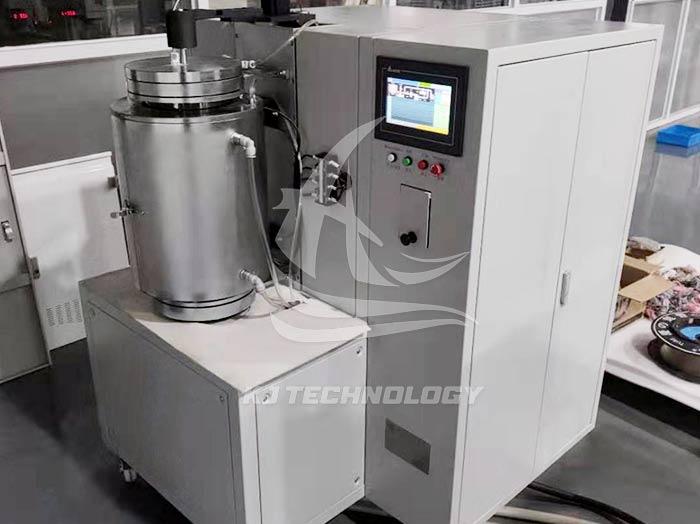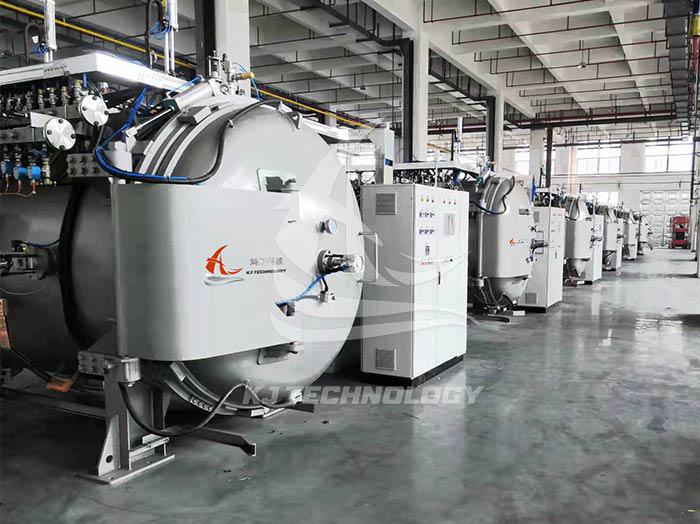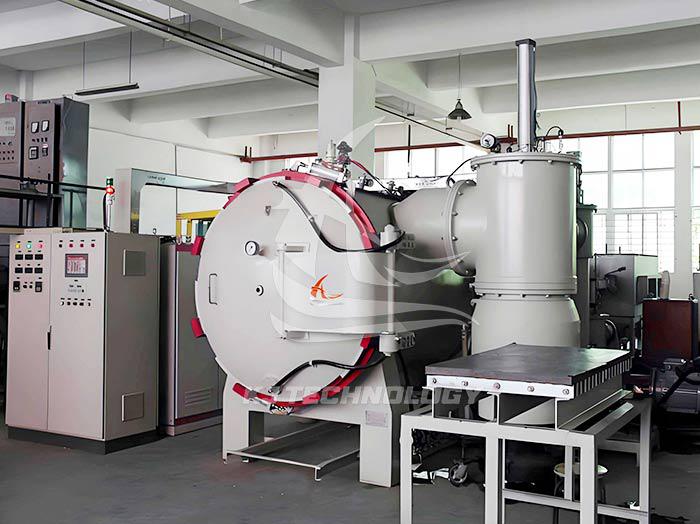Application of Aluminum Brazing Vacuum Furnace in Aerospace Industry
 07-03-2025 Author: KJ technology
07-03-2025 Author: KJ technology
The application of aluminum brazing vacuum furnace in the aerospace industry is extremely extensive and critical. Its low temperature, high precision, and non oxidizing characteristics make it an ideal choice for connecting high-performance metal materials and manufacturing complex precision structural components. The specific application scenarios and advantages are as follows:
1. Core application scenarios
Aircraft engine manufacturing
Key components brazing: engine guide vanes, high-pressure turbine guide vanes, rotor blades, combustion chamber fuel nozzles and other components, which rely on vacuum brazing to achieve high-strength connections due to the fact that the materials are mostly titanium alloys and high-temperature alloys (with poor welding performance). For example, the high-pressure compressor crown ring component of a certain engine model is vacuum brazed to ensure sealing and durability in high-temperature and high-pressure environments.
Manufacturing of complex structures: The brazing of honeycomb sealed structures, fuel manifolds, and other components requires precise filling of small gaps in a vacuum environment to avoid oxidation and contamination, ensuring airtightness comparable to precision instruments.
Satellite and spacecraft manufacturing
Waveguide microwave devices: The core components of satellite communication systems, which used to be brazed using flame or salt bath methods, are gradually being replaced by vacuum brazing. Vacuum brazing of aluminum waveguides can eliminate impurities in the weld seam and improve signal transmission stability.
Liquid propellant delivery system: The titanium conduits, capillaries, etc. of the satellite attitude control system need to be brazed in a vacuum environment to ensure zero leakage of high-pressure gas or liquid delivery.
Deep space exploration sampling sealing: For deep space exploration missions such as Mars and asteroids, vacuum brazing technology has been studied for sealing sampling containers to meet the stringent requirements of long-distance transportation.
Research and development of hypersonic aircraft
Pre cooler manufacturing: The SABRE engine pre cooler from Reaction Engines in the UK is composed of thousands of fine metal tubes, with a wall thickness of only half the diameter of a human hair. The vacuum brazing furnace achieves seamless connection of micro tubes by precisely controlling the temperature field, ensuring that the pre cooler can reduce the air temperature from 1000 ℃ to -150 ℃ within a few seconds, supporting the engine performance of hypersonic flight (Mach number>5).
2.Technological advantages support application
Low temperature connection reduces deformation
The heating temperature of vacuum brazing is usually lower than the melting point of the base material (such as aluminum alloy brazing temperature of about 600 ℃), to avoid material deformation caused by high temperature, especially suitable for the manufacturing of thin-walled and complex structural components (such as satellite antennas and engine blades).
Non oxidizing environment, improving performance
The vacuum environment (ultimate vacuum degree ≤ 3 × 10 ⁻ ³ Pa) can completely remove the oxide film without the need for flux, eliminate impurities and pores in the weld, and significantly improve the corrosion resistance and fatigue strength of the joint. For example, vacuum brazing of aircraft engine turbine blades enables them to maintain structural integrity even under high temperature and pressure.
Ability to connect dissimilar materials
It can achieve brazing of dissimilar materials such as titanium alloy and stainless steel, ceramics and metals, meeting the dual requirements of lightweight and high-performance in the aerospace industry. For example, the titanium alloy shell and ceramic sealing ring of a satellite fuel tank are fused at the atomic level through vacuum brazing to ensure sealing reliability.
High precision and consistency
Through zone heating and intelligent temperature control system (temperature uniformity within ± 3 ℃), the vacuum brazing furnace can achieve synchronous processing of multiple parts and joints, ensuring consistent quality in mass production. For example, the brazing of honeycomb sealed structures in aircraft engines can fill hundreds of micropores in one furnace, increasing production efficiency by more than 50%.
3. Verification value of typical cases
Manufacturing of Aircraft Engine Components
After vacuum brazing, the joint strength of the high-pressure turbine guide vanes of a certain model of engine increased by 30%, and the high temperature resistance performance reached the design requirement of 1200 ℃. The service life was extended to twice that of the original process.
Satellite waveguide device upgrade
After a certain satellite communication system switched to vacuum brazed aluminum waveguides, the signal loss was reduced to below 0.1dB/m, an increase of 40% compared to traditional processes, meeting the requirements of high-precision communication.
Hypersonic engine precooler
The SABRE engine pre cooler of Reaction Engines has achieved seamless connection of 2000km long micro tubes through vacuum brazing, and the system cooling efficiency has reached 98% of the design value, laying a key technical foundation for the development of hypersonic aircraft.








